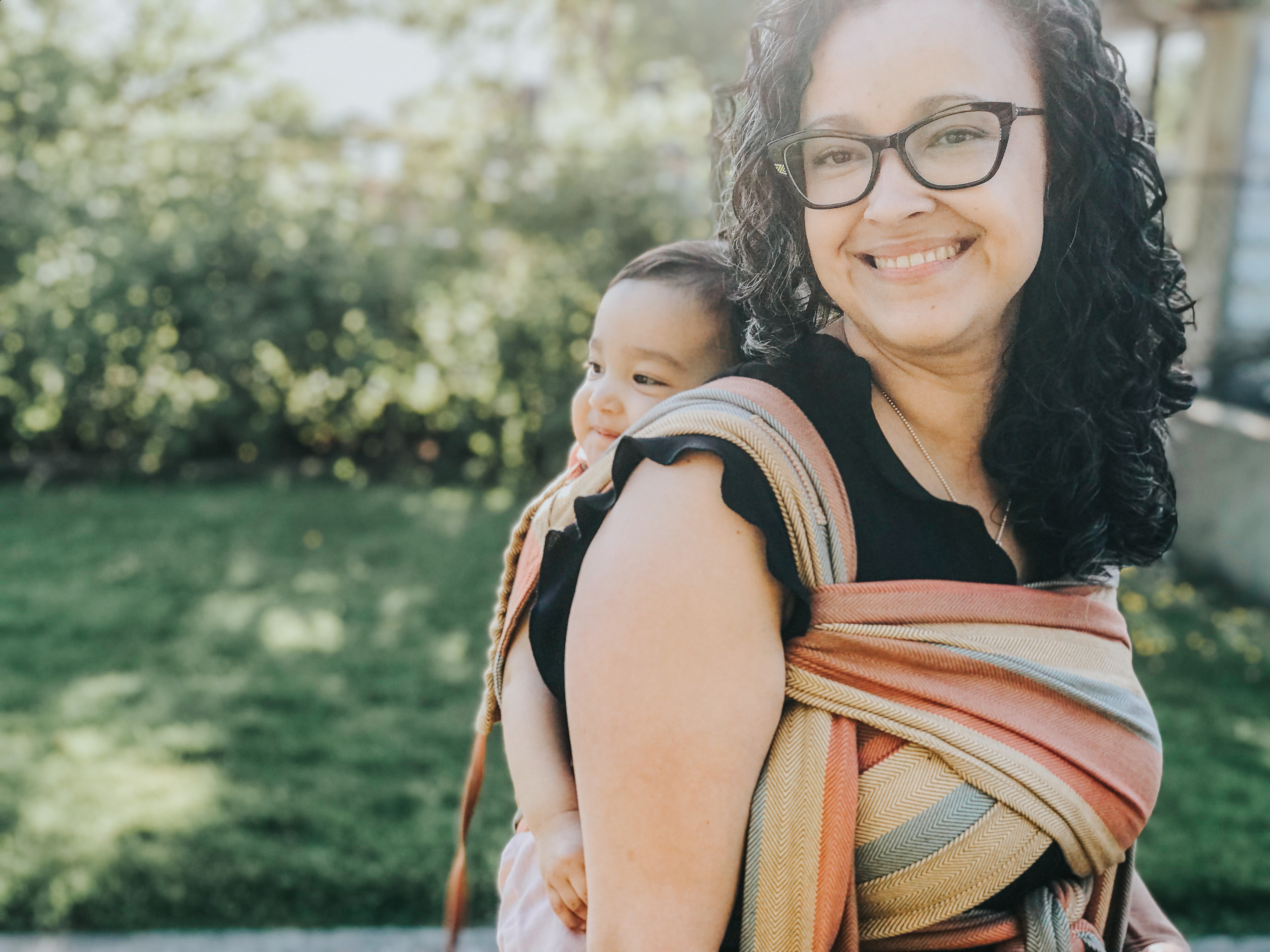

Babywearing in the Winter with a Toddler
“Winter is not a season, it’s a celebration.” - Anamika Mishra
You've likely read and heard many tips about how to babywearing newborns and young infants in carriers during colder weather. However, we don't often hear about how to do it with older, bigger babies and toddlers. Do they fit in a babywearing jacket? Do you wear an oversized sweater? Are carrier covers better? How do you dress them?
There are so many variables with a toddler so here are seven tips to help make your toddler wearing experience simpler and more enjoyable as you venture out and celebrate the winter.
1. Dress in Layers
Over the years living here on the "wet coast" I've found that wearing layers is really helpful when babywearing because carrying a little one is hard work and I tend to overheat easily so ensuring that both of us have layers that easily peel off is vital to staying comfortable. The difference with a toddler and young infant is that your toddler will likely want to walk around a bit instead of being cozied up against you with only one layer of fabric between the two of you so you both need to wear layers to ensure you stay warm and dry.
Using base layers made of wool, or thermal fabric is the first step. They should fit just right, not too small or too big in order to work efficiently. Then we layer on a warm insulating layer like a fleece sweater and fleece bottom or a one piece fleece suit to keep the heat in. The top layer depending on how cold and wet it is where you are can be something like a puffy jacket, snowsuit, or even a muddy buddy to stay dry if it isn't too cold.
2. Protect their Extremities
Keeping their heads and hands covered can be such a challenge if they resist the idea but it's so important. Using a hat with ties will help you secure it to their head. If they are already expressing colour or character preferences then using that to your advantage can help encourage them to wear their toques without too much fuss.
Instead of scarves many parents like to use neck warmers to keep little ones' necks, chins and noses warm, especially if it's windy. Depending on your child a balaclava might be a great combo for their head and neck.
Keeping their hands covered is equally as important. Mittens are warmer than gloves and definitely easier to put on at this age. If it's just cold out or we're out for only a short while then we'll do some knitted mittens but for keeping hands dry and toasty some waterproof mittens are a must.
Don't forget to cold proof their feet! some merino wool socks will be soft and keep them warm. Depending on your tot's footwear preference you might want to layer some wool booties and waterproof covers or use snow boots to keep their feet warm and dry.
3. Use a Cover if Needed
Since your little one is dressed for the elements when they get tired you can just place them into your carrier on top of your top layer. However, if there is wind or if it's extremely cold, having a cover will keep your toddler warm. Once they stop moving around, their bodies will start to cool down and they may need an additional layer to keep them warm. This can also be helpful if you are out all day, dressed for warmer daytime activities and need an extra layer in the evening once the temperature drops. You can use a baby carrier cover, a blanket, large fleece scarf or a fleece cover up/poncho.
4. Use an Adjustable Carrier
This might seem like an odd one but the fact that you'll be wearing your carrier over your layers of clothing and your little one's layers means it needs to adjust to the extra bulk. The straps especially need to be long enough if you are using a soft structured carrier, half buckle or Meh Dai. Your ring sling and woven wrap need to be long enough also and you might need to adjust your carry to make space for all the layers.
Whatever carrier you use, there will be some adjustments that need to be made due to slippery fabric and bulky layers so keep that mind when packing your gear and maybe even practice at home before going out on a big adventure.
5. Beware of Velcro
Velcro makes so many tasks simpler compared to ties but it can be a challenge. It can allow for littles to easily pull off toques if they use velcro to keep them on. The biggest hassle is if boots or other velcro containing items come in contact with certain carrier fabrics, they can cause mild to serious damage. This is not a big problem if you are using a canvas carrier or for most soft structured carriers however it can be a big problem for many ring slings, woven wraps, wrap conversion and other woven fabric carriers. The damage can be mild like pilling or severe like broken threads which can make certain carriers unusable. So be aware of any velcro in you gear and avoid using delicate carriers while using that gear.
6. Expect they'll need/want to be carried
Regardless of what child transportation devices you bring with you, your child will at some point no longer want to ride in the stroller/sled/wagon, etc... They may want to walk for a bit and at some point may want to be carried because their little legs get tired. They may also fall, especially if there is a lot of snow or it's slippery and need to be carried for a time. If we expect that they will need this type of support from us even before leaving the house it helps us prepare mentally and practically for that possibility.
If they don't want to be carried and are happy to ride or walk then the "worst" thing is you brought your carrier and didn't use it. If you don't have a carrier with you and they need/want to be carried you'll most certainly regret not bringing it with you and will have a challenging time holding them or convincing them to sit down.
7. Always carry a tote
Even if you carry a back pack or diaper bag with your necessities for your outing, having a tote is a useful thing when adventuring in the winter. Having a tote gives you a place to store those mittens and toque if they come off or to put your jackets and scarves if you make an indoor pit stop for a meal or hot cocoa. Then it packs down very small to fit in your bag once you put all your layers back on.
I hope that these have been helpful tips for you as you prep for winter adventures with you little(s).
What else would you add? We have pretty mild winters here on the West Coast of Canada compared to many parts of North America. I'd love to hear about your experience of babywearing in cold winter weather.
Please reach out if you have any questions or comments and be sure to follow on Instagram for more babywearing content.
Stay warm this season and Happy Wearing!




